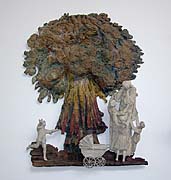
|
1st Station: Jesus' Agony in the Garden of Gethsemane
Since time immemorial people have been afraid of natural disasters,
illness, oppression and war. This anxiety is portrayed here in the form of
the mushroom cloud over Hiroshima and the figure of a desperate mother with
her terrified children clinging to her.
|
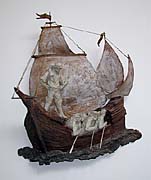
|
2nd Station: Jesus is Scourged and Crowned with Thorns
We see a galley, where captives are whipped, tormented by pain and thirst
and in the end condemned to death. The captives are chained and are rowing
to a single rhythm. Above them stands a guard with a whip.
|
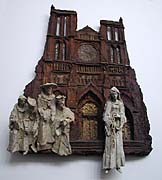
|
3rd Station: Jesus is Condemned to Death
The scene is transported to France in 1431. On the old square in Rouen, in
front of the closed door to the cathedral, stands Joan of Arc. She is
looking at her chained hands in silence. The bishop, in the name of the
ecclesiastical court has just read the decree that declares her to be a
heretic, idolater and devil worshipper. Four men - a priest, a cardinal, a
judge and a monk - look towards Joan with disdain.
|
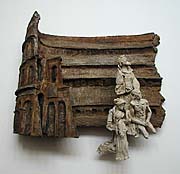
|
4th Station: Jesus Bears the Cross
Christians are waiting to be killed in the Colosseum in Rome, where the
excited crowd is being entertained by bloodthirsty games. Just as Christ
was condemned and had to bear the cross of his suffering, so too do these
Christians have to bear their own personal cross.
|

|
5th Station: Jesus Speaks to His Mother
A large figure of the Virgin Mary stands amid a high-rise housing estate.
Around her are people in need.
|
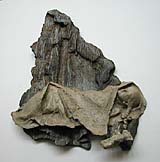
|
6th Station: Jesus Falls
We see a dead child that has committed suicide, abandoned by its mother.
Next to the child lies its last and perhaps only friend - a teddy bear.
|
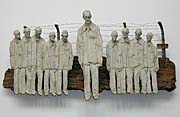
|
7th Station: Simon of Cyrene Helps Jesus Carry the Cross
We are in the concentration camp in Auschwitz. In August 1941 ten
prisoners were picked out on the parade ground to be killed. Prisoner no.
16670 was Maximilian Kolbe, a Franciscan. He was not one of those chosen,
but he stepped forward and volunteered to die in place of one of those
condemned, the father of a large family.
|
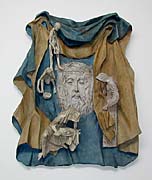
|
8th Station: Veronica Wipes Jesus' Face
Jesus' face, full of suffering, is in the centre. The cloth around his
race forms a frame. A second, inner frame is made up of people who have
fallen on hard times, looking down to the ground in shame or pain. The
shroud links the image of the humiliated Saviour with fallen mankind.
|
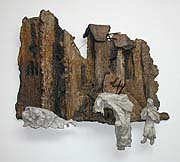
|
9th Station: Jesus is Stripped
We are familiar with the image of destroyed cities or villages from
television and newspapers. Refugees, dressed in nothing but rags. A woman
is lying on the ground to shield her child. Over the last hundred years
millions of people have lost the roof over their heads as a result of war
or natural disaster.
|
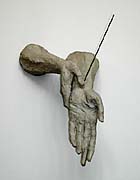
|
10th Station: Jesus is Nailed to the Cross
An arm pierced by a long thin needle symbolizes the arm of a young doctor,
who discovered a serum to treat a serious illness. He tested it on himself
and later died as a result.
|
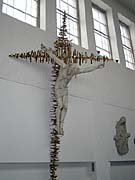
|
11th Station: Jesus Dies on the Cross
The Cross grows from the paved floor of the church like a tree and rises
above all the other Stations of the Cross. The figure of Jesus - larger
than life - hangs from the cross. The cross is made of golden rays that
evoke barbed wire, prison and death. But their golden colour is a reminder
that death will not have the last word. The tree of the cross that brought
death will become the tree of life.
|
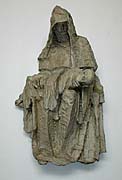
|
12th Station: Mary Holds the Dead Jesus in her Arms
The grief-stricken mother holds her dead son on her lap. The Lhotka Pieta
does not depict the body of the adult Jesus, but a child who died of
hunger, wrapped in a shroud.
|
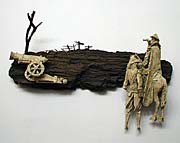
|
13th Station: Jesus is Placed in the Tomb
After the Battle of Waterloo the Duke of Wellington with his aide-de-camp
looks for signs of life. The ground around is torn to pieces by artillery.
On the horizon we see a bare tree and a few rough crosses to mark the
graves of those killed.
|

|
14th Station: Christ Risen from the Dead
In this last scene all the figures are looking towards a larger-than-life
figure of Christ, and he invites them into his Kingdom.
|